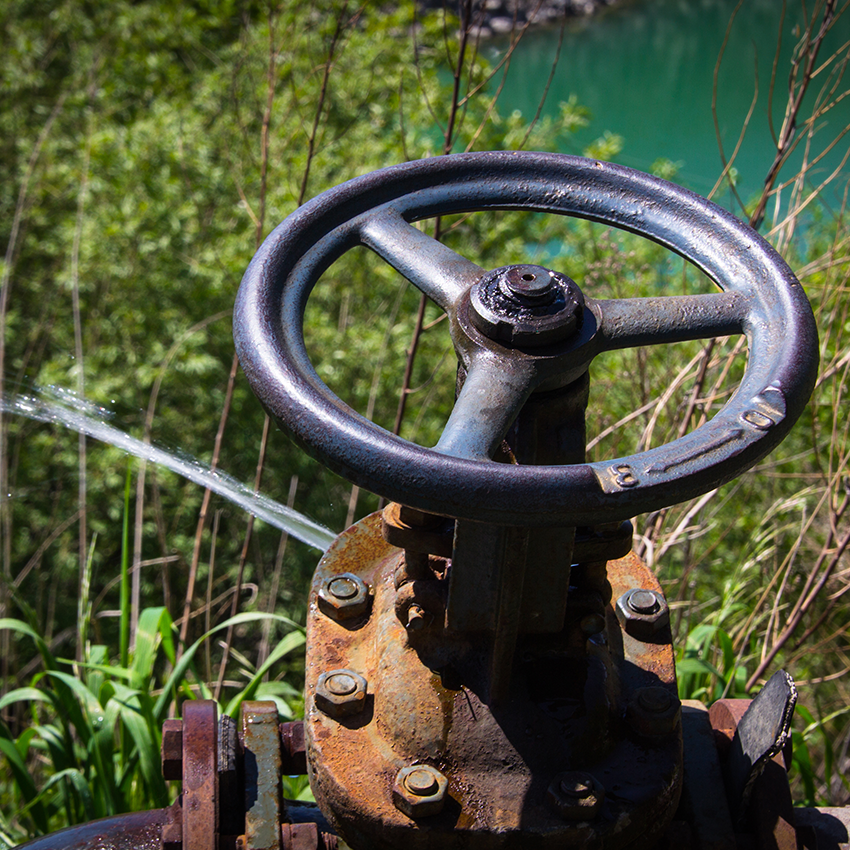Leaks are never good, whether it’s a leaky boat or a leaky pipe system. Even advanced water utility systems can experience water losses ranging from 10 – 40%, with these losses being proportional to the population of the urban area serviced by the water distribution system. Large cities like New York, Chicago, and Los Angeles are vulnerable to staggering amounts of water loss in absolute terms. It represents both a significant loss of resources and loss of revenues with matching increases in operational costs to a city, its water utility and affected property owners. That’s where a water monitor comes in.
Worldwide water losses are estimated at $14 billion a year, with at least $2 billion of this being lost in the US. Concurrently, the degradation of a water supply system can cause environmental degradation and structural damage while posing a potential health threat due to impurities entering the water distribution system. Not only do leaks reduce supply, they can impair the quality of the water itself.
All pipes and fixtures deteriorate and decay with time. The older the system, the more vulnerable it is. Corrosion and rust accumulation, differential settlement, the wearing away of seals and fixtures, dislocation of joints, vibratory damage, blockage due to clogging, and simple wear and tear on valves and meters are all factors that contribute to the slow and inevitable decay of a water system over time. Believe it or not, many large cities have water systems that date back more than a couple of centuries.
The first step in solving this problem isn’t admitting that it exists, it’s finding where it occurs. Lack of monitoring can result in unaddressed problems accumulating to the point at which the integrity of the whole water distribution system can be called into question; all of this can be prevented with real time monitoring of the system. If there was ever an instance in which an ounce of prevention was worth far more than a pound of cure, it is in the monitoring and auditing of water systems.
Prevention is the key. Prevention allows a system operator to focus his limited resources for maintenance and repair where they are most needed and cost-effective. This is also of great financial importance since over 30% of a water system’s operating budget can be devoted to maintenance; and maintenance, being labor intensive, is inherently expensive.
The largest financial losses that occur within a water system are the opportunity costs associated with non-revenue water. Non-revenue water (which is not the same as unaccounted for water) is defined as water that is delivered by the water distribution system but never makes it to paying customers. Potential end-users never see this water since it has been lost to the system via leaks, evaporation and drift or even poor record keeping by the Water Department.
WATER DISTRIBUTION SYSTEM OPERATION AND LOSSES
Water is carried throughout a city being served by a system of buried underground pipelines of various types and sizes. The pipe system begins with a very large diameter central water main. This carries the water to a series of smaller branch pipelines, which, in turn, distribute the water to smaller diameter service pipes, which then connect up to the water consumers. Each pipe where a branching pipeline diverges from the main represents a node in the system and is represented by an appropriate pipe fixture (bends, valves, tees, wyes, flanges, etc.), and each node represents a potential failure and leakage point. Structurally, these are vulnerable because applied forces from overburden, ice buildup, vibration, and shifting soils get concentrated at these points. Furthermore, each fixture is connected with a joint that is usually weaker than the pipe it is connected to.
The pipes themselves are made from a variety of materials, with older pipes typically made from materials that are significantly different than newer pipes. The oldest cast iron water pipes have been replaced with flexible ductile iron pipes and steel pipes, which, in turn, are often replaced by polyvinyl chloride (PVC) pipes—though very large diameter water mains are still typically made from reinforced concrete pipes. PVC is popular because it is inexpensive, durable, and resistant to corrosion. The pipe sizes also vary considerably, from branch lines servicing homes as small as a half inch in diameter, to more than 16 inches in diameter for water mains.
LEAK DETECTION TECHNOLOGY
A newly constructed water distribution system made with modern materials leaks very little at first. All piping systems wear out over time and develop revenue stealing leaks. Each year, the problem gets worse and the water system operator must devote significant resources to leak detection operations.
The technology changes with time, but the procedures remain the same. These methods can be direct or indirect, internal or external. Indirect methods rely on statistical analysis of flow data and pressure reading. Direct methods require active physical detection of leak locations. Internal methods measure
the characteristics of the liquid flow (velocity, temperature, pressure), while external measures require sensors that listen for leaks outside the pipes. Though there are many advanced and expensive leak detection technologies used by industries (especially the oil and chemical industries) to detect leaks in process pipelines, most of these methods are not applicable to finding leaks in buried water distribution pipes.
Except in those rare cases in which leaks are actually visible on the surface (ponding and sink holes, structural damage, buckling pavement, etc.), water system operators are flying blind when it comes to detecting and locating leaks. Thus, they rely on acoustics for detection or real time water monitoring systems like WaterSignal.
PERFORMING LEAK AUDITS
The key to minimizing water losses are regularly scheduled audits (performed at least annually, which should include annual updates of the audit’s extent and scope) and thorough analysis of data collected through real time water monitoring. During an audit there is an examination of both the accuracy and completeness of the water supplier’s records and data. These include billings, receipts, and meter readings. By collating this data geographically, water system operators can gauge the efficiency of the system’s distribution system. In doing so, they can identify potential locations of water loss along with estimated amounts at each leak point. Audits allow for updating of system information including the
system’s master operating plan, maps of the distribution system, meter evaluations and upgrades, records organization and collation, along with manual examinations of fittings, valves, etc.
Costs of audits vary with both the size of the distribution system and the depth of analysis, and are usually charged per mile of water main or pipeline. WaterSignal makes water audits easy by providing real time water consumption and costs by meter. With WaterSignal, property managers can drill down to charts and view water meter consumption by year, month, day or even by hour.
The simplest method of performing a water audit is to measure water distribution during off -peak hours (such as from 2 a.m. to 3 a.m.). If the amount of water distributed during these hours of low water usage shows a steady increase over time, it is indicative of significant water losses in the system. Water utilities performing more detailed audits may find this to be a useful first step.
The initial steps in performing a water audit are to identify all the sources of water supply feeding the distribution system and quantify the amounts of water (measured in gallons per day) of each source. The summation of these numbers will give the total amount of water supplied by the system.
Once these quantities have been identified, calculated, and verified, they can be checked against other metered water users. Water users include residents, businesses, industries, and rental dwellings that are metered customers of the water system. A thorough examination of their records since the previous audit last year will indicate any changes that have occurred since then.
Armed with this data and its geographical correlates, an operator can identify potential locations of water loss while estimating the amount lost at each leak location. There are a multitude of potential types of water losses: broken and malfunctioning meters, leaking pipe fittings and fixtures, worn out valves, cooling tower evaporation and drift, and irrigation system malfunctions. Poor record keeping, paperwork errors, and accounting mistakes may also account for lost water, but once the problem has been properly defined by the audit, the operator can plan corrective measures.
The International Water Association (IWA), in conjunction with the American Water Works Association (AWWA), has standardized the methods and terms used by water audits. This consistent methodology rationalizes the process and results in consistent performance indicators. The IWA and AWWA divides
total system water supply into authorized consumption and water losses. Billed authorized consumption (revenue water) is what we normally think of as typical water supply distribution and usage. Un-billed authorized consumption includes those unmetered but acceptable activities described above. These, along with water losses, are classified together as non-revenue water. These losses include real physical losses from leaks and pipe failures as well as apparent losses from booking errors.
WaterSignal is a recognized innovator in water conservation due to its real time water monitoring and leak detection system. Leveraging over two decades of engineering expertise, WaterSignal monitors domestic meters, irrigation systems, and cooling towers for residential, commercial, multifamily, senior living, medical, schools and colleges. WaterSignal’s intelligent, non-invasive device accurately measures water usage and reports the data in real time to a secure dashboard. While dramatically reducing water costs and footprint, WaterSignal saves valuable time and provides unique insight on our most precious resource, water.
For more information contact us today!
Written by Daniel P. Duffy for Water Efficiency Magazine. Follow Water Efficiency on Twitter @H20Efficiency
Edited for WaterSignal by Caleb LaPointe




